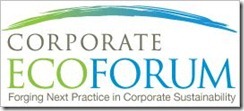 I am fortunate to be heading off in a few days to Brazil’s Amazon rain forest, where I will join peers from various industries and regions of the world for a week-long sustainability leadership development experience.
I am fortunate to be heading off in a few days to Brazil’s Amazon rain forest, where I will join peers from various industries and regions of the world for a week-long sustainability leadership development experience.
How did I get to be so lucky? Dell is a member of the Corporate Eco Forum (CEF), along with about 80 other large companies whose combined revenues exceed $3 trillion, and who share a strong commitment to corporate responsibility. This year, CEF invited employees of member companies to write a short application essay, describing their personal commitment and actions to making their companies and/or communities more sustainable. I was fortunate to be selected as one of five winners among more than 150 applicants.
This trip will take us to a research camp in the heart of the Amazon rain forest, where leading ecologists and scientists are connecting the dots between the health of forest ecosystems and the overall health of the planet. A few facts put this amazing part of the world in perspective:
- The Amazon rain forest covers an area almost as large as the U.S. mainland.
- It accounts for more than 30 percent of the world’s captured carbon reserves by vegetation.
- The Amazon contains a quarter of the world’s fresh water.
- The Amazon contains half of the world’s biodiversity. There are more species of trees in 2.5 acres of Amazon forest than in all of Europe and North America combined.
Our expedition will be led by renowned biologist Dr. Tom Lovejoy, who has advised several U.S. administrations and personally led journalists, celebrities and others to this same research camp.
This trip brings together sustainability-minded individuals from around the world and representing multiple industries, and to challenge us to develop new pathways for a more sustainable future—not just for the world, but also for our companies. We will brainstorm better ways to account for the many ways our businesses rely on healthy ecosystems and robust natural infrastructure. We will explore ways to reach across our functional boundaries and find new methods to collaborate and share best practices. I can’t wait!
In future posts, I will share more about the leading role Dell is taking in addressing some of these very big questions. And when the call for entries comes around for next year’s CEF eco-challenge, I hope you consider applying.